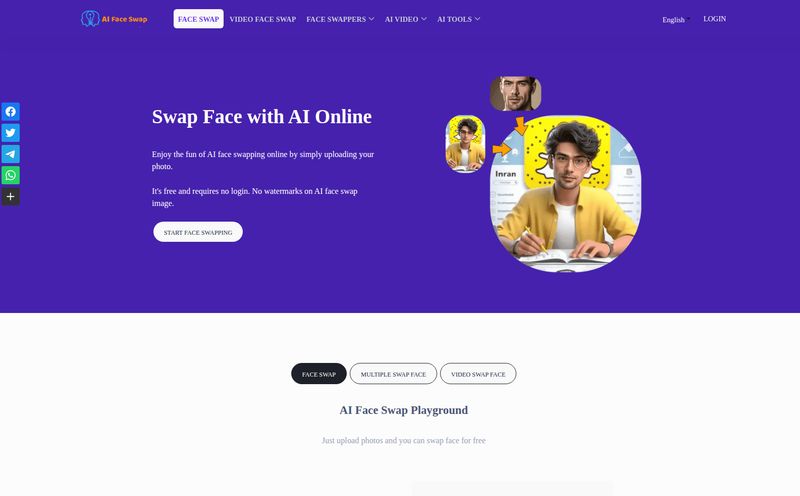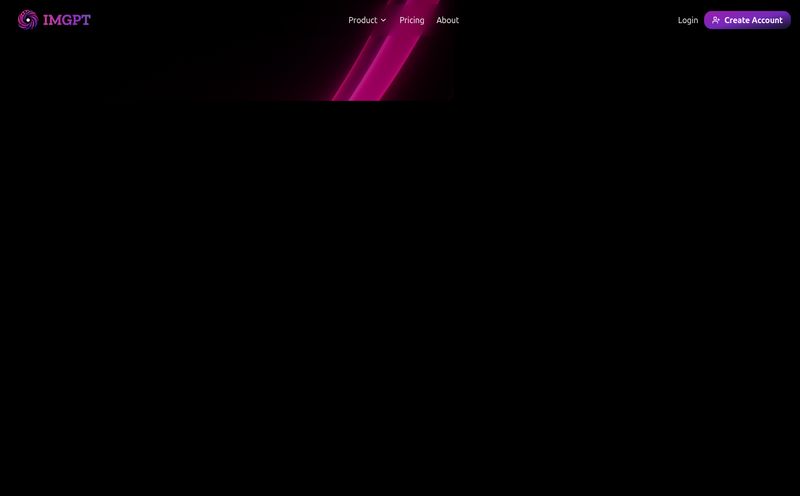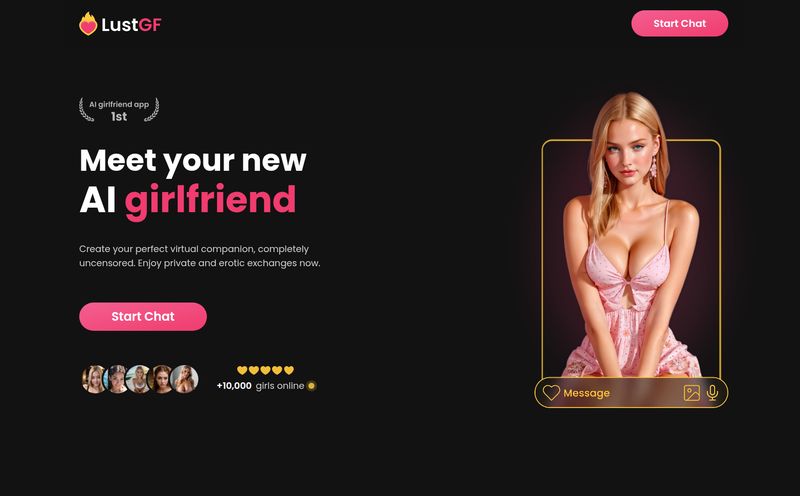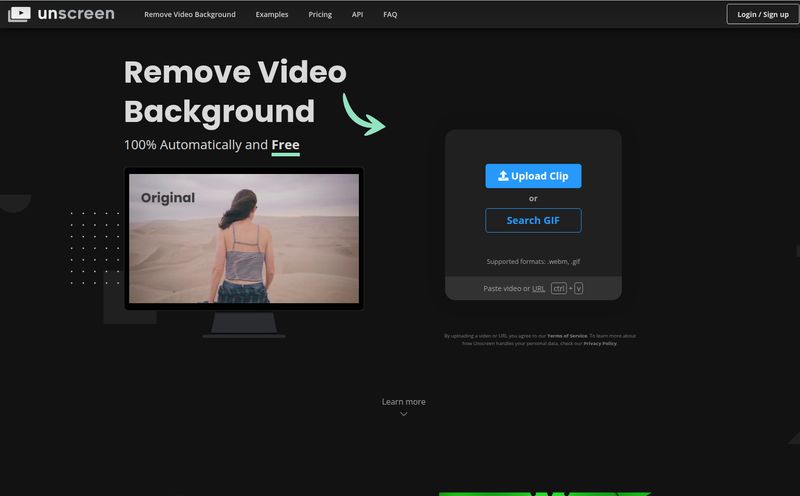For years, if you wanted a decent product photo, you were stuck between two not-so-great options. You could either spend a small fortune hiring a professional photographer and studio space, or you could spend hours wrestling with Photoshop, trying to perfectly trace your product with the pen tool until your eyes blurred and you started questioning all your life choices. I’ve been there. The endless layers, the confusing masks... it’s a whole thing.
So when I started hearing whispers about AI photo editors that could do the heavy lifting, my ears perked up. I've been in the SEO and content game long enough to be skeptical of anything that promises a 'magic' solution. But I kept seeing the name Pixelcut pop up in creator circles. I decided to give it a spin, expecting another overhyped tool. I was wrong.
Pixelcut is, for lack of a better term, a breath of fresh air. It’s an AI-powered photo editor that feels like it was designed by people who actually need to get work done, fast.
So, What Exactly is Pixelcut?
Imagine having a photo studio, a graphic designer, and a tech wizard all rolled into one, accessible right from your browser. That’s pretty much Pixelcut. It’s a platform built around a suite of AI tools designed to make your photos look incredible, with minimal effort. Whether you're selling handmade jewelry on Etsy, managing social media for a brand, or just want a cleaner profile pic, this tool aims to remove the technical friction.
Its main gig is taking your ordinary, everyday photos and turning them into professional-grade assets. This isn't about slapping on a simple filter; it's about fundamentally changing how you create and edit visual content for your business.
Visit Pixelcut
The Features I'm Actually Using (And You Will Too)
A tool can have a million features, but what really matters are the ones you use day in, and day out. Here’s the breakdown of what makes Pixelcut so darn useful.
The Background Remover That Just Works
This is the hero feature, no question. For anyone in e-commerce, a clean, white background is the gold standard. In the past, achieving this was the most tedious part of the job. With Pixelcut, you upload your image, and a second later, the background is just... gone. And it’s clean. It handles tricky things like hair and fine details surprisingly well. It’s not perfect every single time, but the success rate is high enough that it has saved me what feels like a lifetime of manual editing. It’s a game-changer for creating consistent product listings on platforms like Amazon or Shopify.
Creating Product Shots with the AI Photoshoot
Okay, this is where things get a little bit sci-fi. Pixelcut has a feature they call AI Photoshoot, which is their version of a virtual studio. You take a simple picture of your product—seriously, just on your kitchen table is fine—and remove the background. Then, you can place it into a new scene generated by AI. Want your skincare bottle sitting on a marble countertop next to a ficus plant with soft morning light? Just type it in. Want your new sneakers on a slab of rock with a dramatic, misty mountain backdrop? Go for it.
It’s like having an art director and a location scout on retainer, but they’re an AI and they cost next to nothing. This is incredible for creating lifestyle shots and ad creatives without ever booking a location or buying props. The results can vary, and sometimes you get a slightly weird shadow, but the ability to generate dozens of concepts in minutes is invaluable.
Beyond Products: The Handy Extras
Pixelcut isn't just a one-trick pony. The Magic Eraser lets you remove unwanted objects from a photo—like a photobomber or a stray power line—by just scribbling over it. The Image Upscaler is a lifesaver when you're stuck with a low-resolution logo or image that needs to be bigger without looking like a pixelated mess. And of course, there's a full-blown AI Image Generator if you need a completely custom image from a text prompt.
They’ve also built in team collaboration, which is a nice touch. If you work with a social media manager or other designers, you can create and share projects within a single workspace, which helps keep branding consistent. No more emailing files back and forth with names like `final_image_v3_final_final.jpg`.
Let's Talk About Pixelcut's Pricing
Alright, the all-important question: what’s this going to cost me? This is another area where I was pleasantly surprised. The pricing structure feels fair and scales well.
Here’s a quick rundown:
| Plan | Price (Billed Yearly) | Key Features |
|---|---|---|
| Free | $0 | Free Background Removal, Free Upscale, Free export without watermark. Limited AI tool usage. |
| Pro | $8 / month | Unlimited AI edits, 300 daily generations, 600 GPU Credits/month, Commercial License. |
| Pro+ | $24 / month | Everything in Pro, but with 600 daily generations and 3600 GPU Credits/month. |
| Max | $48 / month | Everything in Pro+, but with 1200 daily generations and 9000 GPU Credits/month. |
The Free plan is genuinely fantastic. The fact that you get free background removals and can export without a watermark is huge. Most competitors cripple their free tiers to force an upgrade, but Pixelcut gives you enough to be genuinely useful. It's the perfect way to see if the workflow fits your needs.
For most small businesses and solo creators, the Pro plan at $8/month (billed yearly) is the sweet spot. It unlocks the unlimited potential of the AI tools and gives you a generous number of "GPU Credits." Think of these credits as the currency you spend on the heavy-duty AI tasks, like generating a whole new image. Different AI models cost different amounts of credits. It’s a fair system that prevents abuse while keeping costs down for regular users.
The Good, The Bad, and The AI
No tool is perfect, right? Here’s my honest take.
The Good stuff is obvious: It’s fast, incredibly intuitive, and the cost-to-value ratio is off the charts. It democratizes professional-looking photography. You no longer need a design degree to create visuals that sell.
The 'Could Be Better': The main drawback is simply the nature of AI. It’s not a sentient artist. Sometimes the AI Photoshoot will give you an image with six-fingered hands or a shadow that defies physics. You have to be willing to generate a few options to find the perfect one. It's about iteration. Also, some of the most powerful features are, understandably, locked behind the Pro plans. This isn't really a con, just a reality of business, but something to be aware of if you're on the fence.
Who is Pixelcut Actually For?
I see this being a lifesaver for a few key groups:
- E-commerce Store Owners: If you're on Shopify, Etsy, Amazon, or your own site, this is a no-brainer for creating clean, consistent product photos.
- Social Media Managers: Need to pump out high-quality, eye-catching content daily? The templates and AI Photoshoot are your new best friends.
- Small Business Owners: When you’re the CEO, marketing department, and janitor all in one, tools that save you time are worth their weight in gold. This is one of them.
- Content Creators: Making YouTube thumbnails, blog graphics, or Instagram posts just got way faster.
Frequently Asked Questions about Pixelcut
Is Pixelcut really free to use?
Yes, it is. The free plan is surprisingly robust, offering free background removal and watermark-free exports. Some advanced features and higher usage volumes require a paid plan, but you can get a lot done without ever paying a dime.
Can I use images I create with Pixelcut for my business?
Yes. The paid plans (Pro, Pro+, and Max) all come with a commercial license, so you can use the images you create for marketing, ads, product listings, and whatever else you need.
Does Pixelcut have a mobile app?
It sure does! Pixelcut has a very popular and highly-rated app for both iOS and Android. This is great for making quick edits and creating content on the go, which is a huge plus for social media managers.
How do the AI credits work?
Think of them as tokens for the most advanced AI features, like the AI Image Generator. A simple edit won't use credits, but creating a whole new image from scratch will. Each paid plan comes with a monthly allowance of credits.
Is Pixelcut better than Canva or Photoshop?
It's not about being better, it's about being different. Photoshop is an incredibly powerful, all-in-one graphic design suite with a steep learning curve. Canva is fantastic for template-based design and layouts. Pixelcut specializes in using AI to manipulate and create photorealistic images quickly. They can all exist in the same toolkit; I use Pixelcut to prep my images and might use Canva to add text and arrange them into a social post.
My Final Verdict on Pixelcut
After spending a good amount of time with the tool, I can confidently say Pixelcut is the real deal. It’s one of those rare tools that delivers on its promise. It significantly lowers the barrier to creating professional-quality images, saving businesses both time and money.
It won't replace a high-end creative director for a global brand campaign, but for the 95% of everyday visual content needs? It's more than enough. It's powerful, it's affordable, and most importantly, it's easy. In the fast-paced world of online content, that's a combination that's tough to beat.



